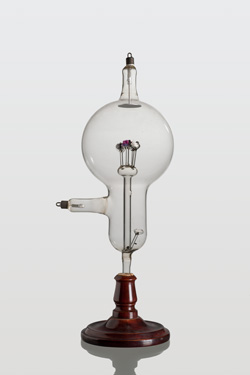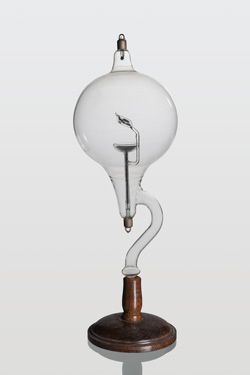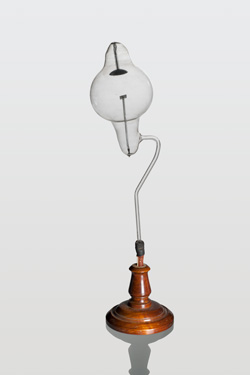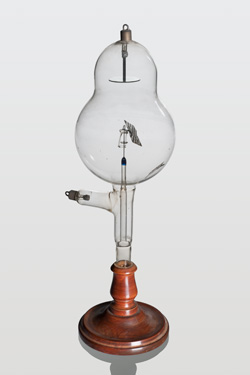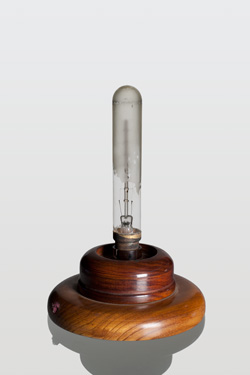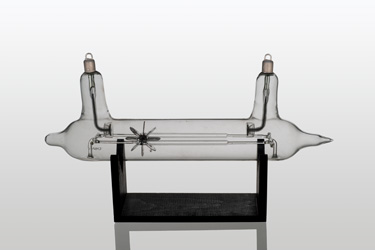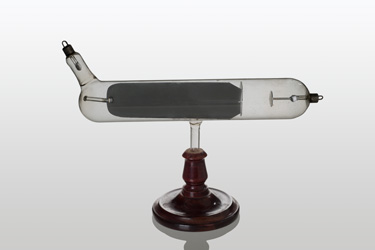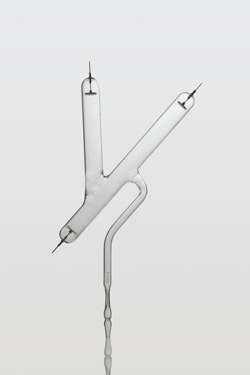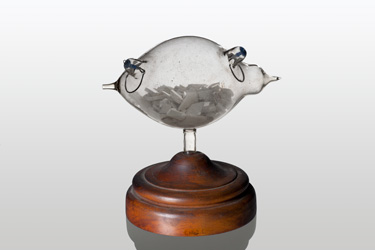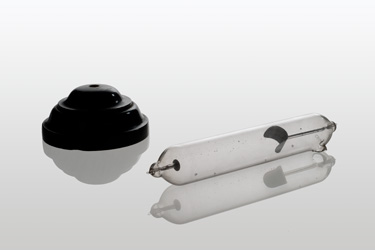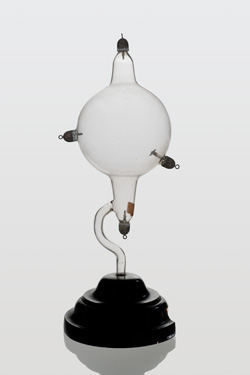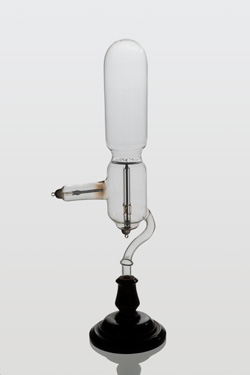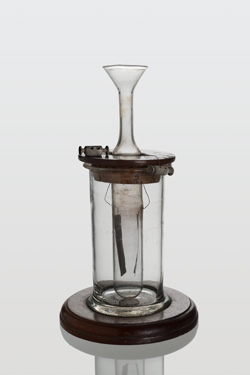Gas Discharges: Crookes Tubes, items 62d-p; Geissler Tube, item 117
These tubes were used as popular lecture demonstrations by Hartung in the 1930s.
Although this type of discharge tube is usually attributed to Sir William Crookes, FRS, it was in fact invented by Heinrich Geissler in the 1850s when he developed an improved vacuum pump and the technique for sealing platinum electrodes into glass.
Crookes in the 1870s was one of most prominent researchers into electrical discharges in gases at low pressure, which can provide some colourful and interesting displays, depending both on the gas in the tube and the pressure, and on the disposition, size and constituent metal of the electrodes, and whether a magnetic field was applied to deflect the charged particles in the discharge. He was greatly assisted by the work of his glassblower (Charles Henry Gimmingham) in making such apparatus.
Crookes hypothesised a special state of matter, and invented a “radiometer”, on the basis of these researches. More controversially, he became involved in spiritualism, which compromised his reputation in scientific circles.
Such work eventually led to the discovery of X rays by Rontgen and the electron by Thomson in the 1890s.
Brock, W.H. (2008), “William Crookes and the commercialisation of science”, UniMBail 540.92 CROO/BROC
Dahl, Per. F. (1977), “Flash of the Cathode Rays, a history of J.J. Thomson’s Electron”, UniMBail 539.7211209DAHL

